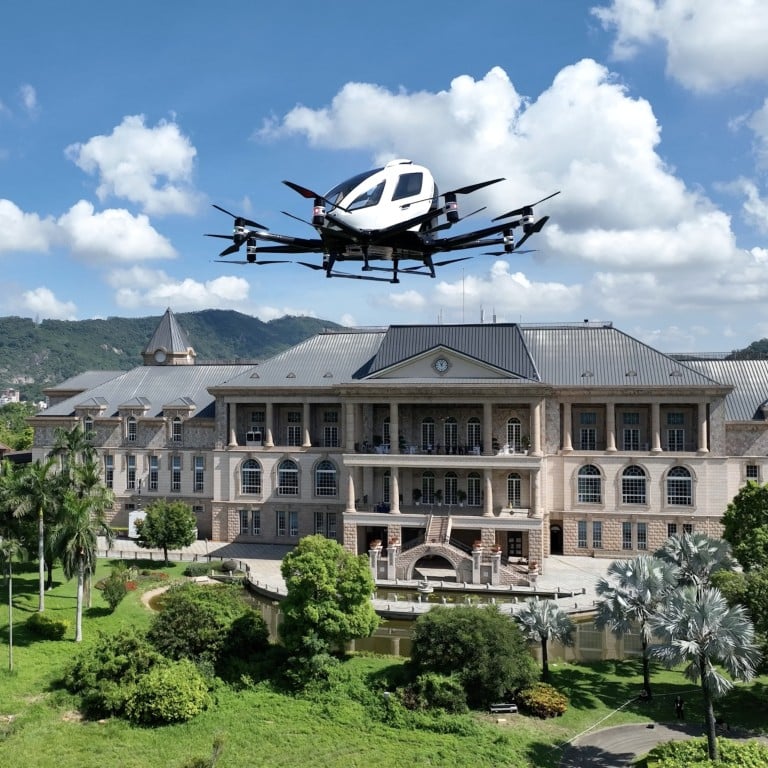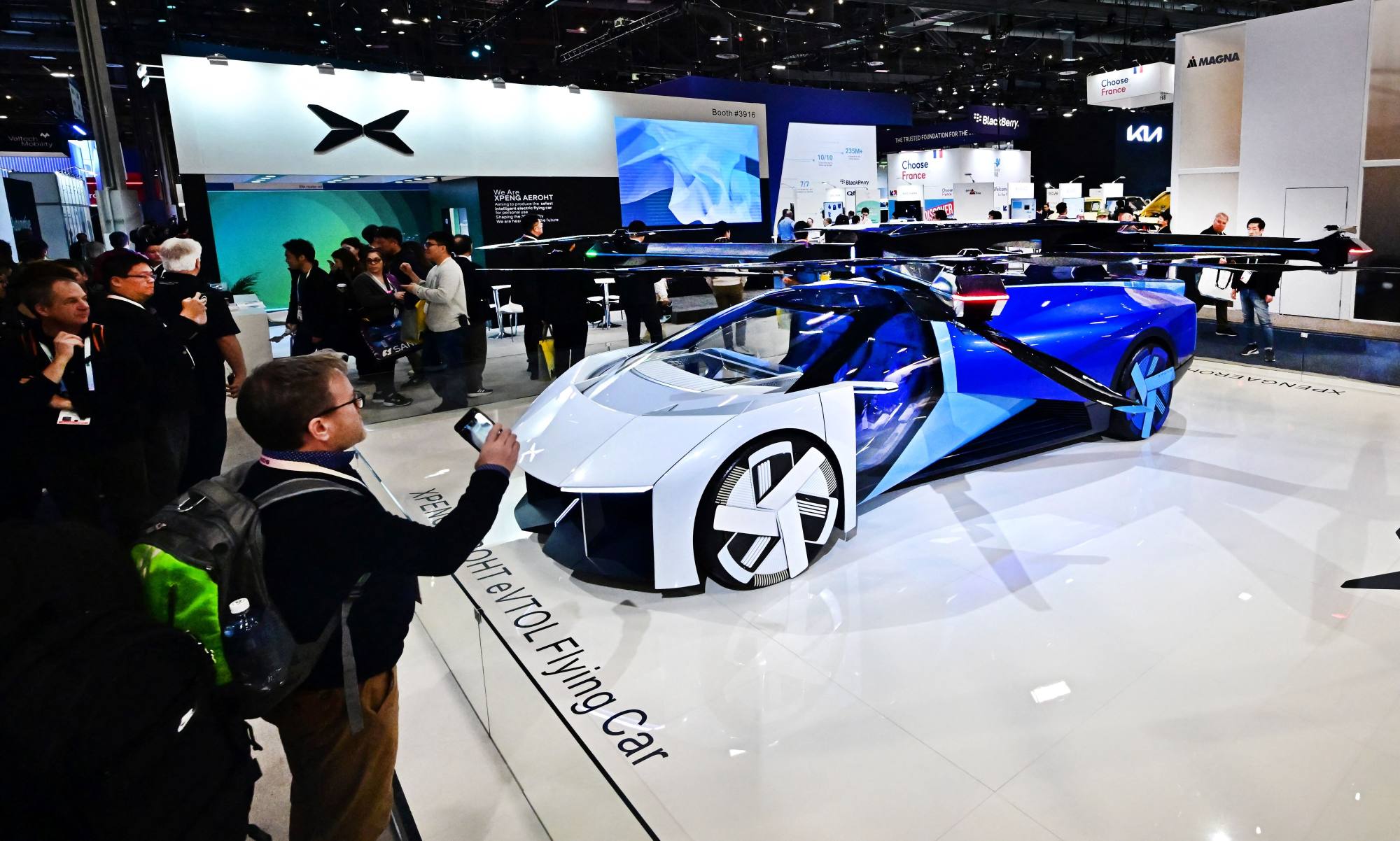
How China is making its dream of flying cars, drones and sky cities come true
- Policy, financial and infrastructural support is creating a conducive ecosystem for China’s ‘low altitude economy’, integrating advanced aerial tech into everyday life and urban planning
Built sleekly in the shape of a sports car, with propellers that unfurl, the futuristic vehicle evoked visions of flying vehicles seen in films such as Star Wars and The Fifth Element. The model, thought to be years away from broad use, completed a successful test flight in October 2022.
The low-altitude economy refers to a comprehensive realm of industries centred around civil-manned and unmanned aerial vehicles, including manufacturing, low-altitude flight operations and integrated services.

China’s green aviation plan presented actionable items to boost the innovation and deployment of flying cars. Important measures include setting up economic demonstration zones and test bases for low-flying aircraft. The plan includes the construction of infrastructure to integrate flying vehicles into urban transport and the daily commute.
While US flying car companies such as Kittyhawk (backed by Google founder Larry Page) shut down in 2022 due to commercialising and scaling difficulties, China’s policy support is fostering a more conducive ecosystem for nascent technologies like this to advance and benefit society.
Xpeng’s AeroHT eVTOL, for instance, unlike other flying vehicles such as by German company Volocopter and Hyundai’s Supernal, which was showcased at CES 2024, can transform between terrestrial and aerial modes.
While the inventions by Volocopter and Supernal resemble personal helicopters, Xpeng’s AeroHT eVTOL has propellers that emerge in flying mode and fold into the car’s body after use. This allows it to navigate road traffic and fit into a standard car park space.

Shenzhen is building a grid of over 600 landing/take-off stations for low-altitude aircraft from by 2025. This will facilitate their deployment and reduce operational costs for companies. Infrastructural support is essential in this industry, especially when the aim is to promote widespread public usage.
With more companies developing flying cars and other low-altitude aircraft in China, industry regulation is also maturing. This year, Shenzhen announced China’s first regulations over the low-altitude economy. Effective from February 1, these regulations aim to standardise the construction of low-altitude flight infrastructure, coordinate the management of low-altitude airspace and flight services, and set safety standards.
The rise of Shenzhen, from seaside town to China’s Silicon Valley
They stipulate the construction of a low-altitude flight service platform, providing services like flight approval applications, intelligent flight monitoring and message alerts to units or individuals conducting low-altitude flight activities.
The fierce market competition in China’s EV industry has certainly contributed to the industry’s exponential growth. But China’s institutional support also plays a role in quickly making hi-tech advancements accessible to ordinary citizens, and not just a few privileged individuals.
Although there are still gaps between the big cities and the underdeveloped areas, China’s policy principle that new technologies should improve people’s lives and livelihoods makes for a promising future.
The development of China’s low-altitude economy could serve as an inspirational model for the world, showing the potential for the integration of advanced aerial technologies into everyday life and urban planning.
Gerui Wang is a visiting scholar at Stanford University


